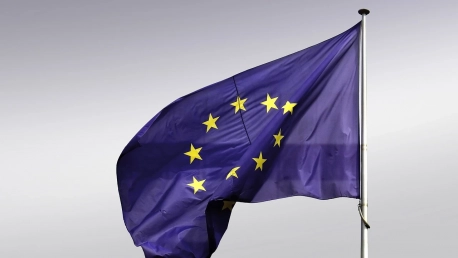The intersection of healthcare and leisure has given rise to a burgeoning industry in the European Union. Health tourism, comprising medical, wellness, and spa tourism, has witnessed swift growth facilitated by the amalgamation of medical treatments and conventional tourism aspects. As we delve into the EU’s health tourism industry, we uncover a sector that is not only steeped in history but also reveling in growth, blending the pursuit of wellness with the joys of travel.
The Rise of Health Tourism in the EU
Historical Context and Modern Landscape
Travel for medical treatments is a concept as old as civilization itself. In the EU’s modern framework, the industry has blossomed, offering everything from essential medical procedures to breakthrough wellness programs and luxury spa getaways. The ancient Greek pilgrimages to sanctuaries renowned for their healing powers echo through time, informing today’s sophisticated offerings that cater to a global clientele seeking recovery in serene European settings. This shift towards a structured market of health-related services acknowledges traditions while leaning into progress, establishing the EU as a destination for healing and rejuvenation.
Economic Growth and Market Potential
Amidst the blend of history and innovation, the EU health tourism market is surging forward, with financial forecasts predicting this trajectory to steeply ascend. Although quantifying the exact worth of this sector is challenging owing to variable definitions and data fragmentation, it’s clear that health tourism represents a booming corner of the EU economy. Recognizing its expansive potential, industry analysts see immense possibilities, with wellness getaways and medical trips pumping vitality and euros into the system, making health tourism an optimistic prospect for local and international stakeholders.
Legislative Catalysts and Cross-border Healthcare
The European Directive on Healthcare
The European Directive on Cross-Border Healthcare serves as a cornerstone for the burgeoning growth of health tourism. Intended to simplify the healthcare process across EU borders, the directive offers a path for patients seeking treatment in any EU member state. With the assurance of receiving reimbursement comparable to their home country’s levels, EU citizens have an expanding healthcare horizon to explore. The resulting escalation in cross-border patient flow is a testament to the directive’s impact, turning healthcare accessibility into a reality for many and fueling the engines of the health tourism industry.
Balancing Quality and Cost Savings
The allure of high-quality, yet affordable, medical care in the EU cannot be overstated. With a significant cost differential compared to their homelands, health tourists are often drawn to regions where their medical euros stretch further. Eastern European countries, like Hungary, Poland, and the Czech Republic, have become beacons for such cost-conscious patients. The harmonious balance of quality care at lower costs has significantly influenced health tourism flows, redirecting paths of patients in search of value without sacrificing excellence in treatment.
Enhancing Competitive Advantage
Incentives and Strategic Positioning
EU states are strategically enhancing their competitive edge in health tourism. In wealthier countries, offers from national airlines and the allure of tax-free healthcare zones have become lucrative lures for international patients. These incentives are multifaceted chess moves, serving not just to bolster the healthcare sector but also nurturing the overall economy. Through these strategies, countries amplify their attractiveness to health tourists, demonstrating an acute understanding of the lucrative nexus between health services and tourism enhancement.
Trends in Health Tourism Demographics
A closer look at the typical health tourist paints a picture of diverse motives and substantial economic influence. The uninsured, often seeking cosmetic procedures, make up a significant portion of this demographic. Additionally, these visitors are inclined to blend medical objectives with leisure pursuits, underlining the dual opportunity for the EU to capitalize on the fusion of healthcare and tourism. From extended recuperation stays to recovery in scenic resorts, patients are spending generously, creating ripples that expand the economic viability of the sector.
Economic Impact and Market Dynamics
Revenue and GDP Contribution
Health tourism’s economic footprint is marked by a hefty revenue stream contributing visibly to the EU’s GDP. Germany, France, and Sweden lead the charge, with wellness tourism accounting for a substantial slice of the health travel pie. The caliber of the EU’s offerings in this sector not only reciprocates with profitability but also indicates a sturdy contribution to the region’s total economic production, substantiating health tourism as a heavyweight in the fiscal arena.
Dual Market Usage by Local Clinics
Clinics across the EU have skillfully navigated the health tourism wave, catering to both local populations and international visitors. This duality allows medical facilities to build upon a stable base while tapping into the bountiful revenue stream of health tourism. The success of this adaptable model points to the sustainability and durability of the industry. As clinics continue to blend their services for local and global patients, they reinforce the industry’s foundational strength.
Sustainable Development and Policy Implications
Medical Tourism’s Influence on Labor and Environment
The ramifications of health tourism reach beyond mere economics. As the industry burgeons, so too does the potential for impacts on the labor market and the environment. Positive outcomes may include more jobs and infrastructure development, while environmental considerations push for sustainable practices in hospitality and facility operations to meet the eco-sensibilities of modern travelers.
The Role of National Policies
In the European Union, a dynamic industry is emerging at the crossroads of healthcare and leisure. Health tourism – a field that spans medical services, wellness programs, and spa experiences – is thriving. This remarkable growth is driven by the seamless integration of professional medical care with traditional tourism activities. Venturing into this sector of the EU reveals an industry that is not only rich in heritage but also experiencing a vibrant expansion. It’s an arena where the quest for health is ingenously woven with the pleasures of travel, catering to those seeking to nurture their wellbeing amidst their journeying adventures. The merger of these two historically separate paths – healthcare and leisurely exploration – has birthed a flourishing health tourism sector that continues to prosper, marking a significant evolution in the way we experience restorative escapes.









